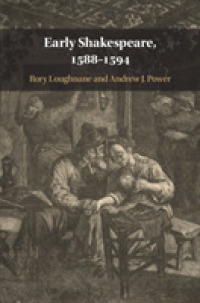- ホーム
- > 洋書
- > 英文書
- > History / World
Full Description
Archaeological analysis at the regional scale investigates the past by studying how people distributed themselves and their activities across a landscape of hundreds or thousands of square kilometers. Archaeological field survey methods developed over half a century combine with powerful new quantitative tools for spatial analysis (including GIS) to unleash new potential for identifying and studying ancient local communities and regional polities. Varied approaches to estimating regional population sizes in both relative and absolute terms are synthesized and their advantages and disadvantages assessed. Tools for quantitative analysis of regional demographic data are presented. Field survey methods developed around the world are compiled from widely scattered sources and best practices for collecting archaeological data to sustain demographic analysis are delineated. Concepts for improved sampling design in regional survey work are derived from fundamental statistical principles. In conclusion, promising directions for future methodological development are identified.
Contents
Chapter 1. Regional Settlement Demography: Why Bother?
Chapter 2. What Can We Use as Population Proxies?
Chapter 3. What Can We Do with Population Proxies?
Chapter 4. How Can We Estimate Absolute Numbers of Inhabitants?
Chapter 5. How Can We Collect Regional Settlement Data for Demographic Analysis?
Chapter 6. Conclusion
Sources of Data for Examples








